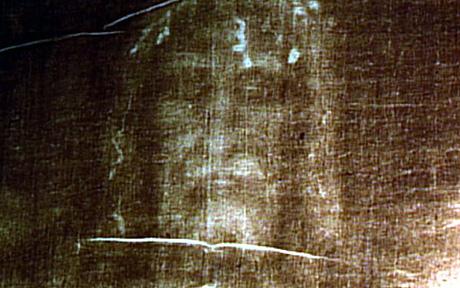Turin Shroud Mystery
Shroud of Turin is a cloth made of linen cloth and bears an image of a man, who appears to be physically traumatized to death in a manner similar to crucifixion.
The Shroud is currently kept in the Cathedral of Saint John the Baptist’s Royal Chapel, which is located in Turin, Italy. Most Catholics believe that the cloth was placed on Jesus when he was buried.
Despite several scientific investigations, it’s still unclear how the shroud’s image got imprinted on it. Again, no one yet has managed to replicate the image. You can clearly view the shroud’s image in Black & White negative than its conventional sepia color. The Black & White image first got observed on May 28, 1898 on the reverse photographic plate of Secondo Pia, who was an amateur photographer and got the permission of photographing it during an exhibition in the Cathedral. It was revealed from the photographer himself that he almost broke the plate after seeing the image.
Shroud of Turin has been the subject of strong discussion amongst top scientists, historians, writers and people believing in Faith. They have all debated about the cloth and its image got created. From the religious standing, it was confirmed by Pope Pius XII in 1958 that the image was Jesus’ Holy Face. The day of his announcement is still celebrated every year as Shrove Tuesday. As already mentioned, some felt that the shroud was the cloth covering Lord Jesus, when he got placed in his tomb.
They believed that the image got imprinted on the fiber during the time of his resurrection. However, skeptics believe that it’s a medieval forgery. Even there are others, mainly scientists, who believe that the image might be the result of reaction of chemicals or other natural processes on the cloth.
Various tests have been conducted on the Shroud of Turin, still there are several debates continuing about its origin. In 1988, radiocarbon dating test was conducted by 3 independent teams of scientists came to the same conclusion that the cloth was made during Middle Ages, around 1,300 years after Lord Jesus lived. Claims of biasing and error in testing were raised almost instantly, but were answered by Harry E. Gove. Still, the dating controversy continued.
An analysis published by Raymond Rogers in 2005 claimed that sample tested by the teams belonged to the area, which was not actually a part of the original cloth. Again, they felt that a fire in late Middle Ages damaged the Shroud and added to its radiocarbon content. This meant that the earlier calculations should have been effected. However, this analysis got strict criticism by Philip Ball (Editor of Nature) and Joe Nickell (A skeptic).
However, research made by the Oxford Radiocarbon Accelerator Unit in 2008 might have revised the 1260–1390 dating (as uncovered in 1988) towards its original contribution. This led Christopher Ramsey, Director of the Unit, to ask the scientific community for fresh probing in regards to the authenticity of Shroud. Despite having an open mind in the issue, Ramsey stressed that he might be surprised if the earlier conclusions would be shown far off from the actual date.




































